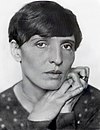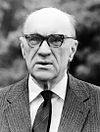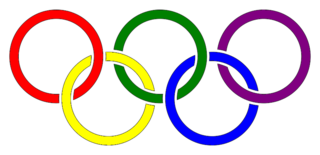| Artist | Country | Category | Games | Medal(s) | Notes |
|---|
 | Gabriele D'Annunzio |  Kingdom of Italy Kingdom of Italy | Literature | 1912 | | Despite being reportedly physically off-putting, D'Annunzio was such a charming man he attracted everyone, including lesbians and Robert de Montesquiou, and was open to all lovers. Besides competing in 1912, he was a judge for the same event in 1924. |
 | Fanie Eloff † |  Union of South Africa Union of South Africa | Sculpture | 1924 | | Eloff's sexuality was made public after his contribution to the Games, when his series of sculptures of nude male dancers led to outcry, further inspection, and then his shunning from South African society. |
 | Vincenzo Gemito Δ |  Fascist Italy Fascist Italy | Sculpture | 1924 | | Gemito was known to be gay among fellow artists from his early days, and the homoeroticism in his drawings supposedly made it obvious to everyone else. Between being an orphan denied of a heteronormative family, and his growing prominence in society from his success in sculpting, he attempted to steer his personal and professional circles to appear straight; doing so reportedly drove him insane, and he spent two decades in and out of asylums before being finally released in 1909. Unlike his partner Antonio Mancini, who had also been sent to an asylum, Gemito managed to have a career after his release, though it was made clear that he could no longer create homosexual art if he wished to be prominent. At the 1924 Games, he entered seven pieces into the sculpture competition and was also a judge of it; none of his pieces placed. |
 | Robert Graves Δ |  Great Britain Great Britain | Literature | 1924 | | Graves was openly bisexual, having intense relationships with men and (often masculine) women. In the 1920s, he lived in polyamorous groups. In his 1929 autobiography, Good-Bye to All That , he described himself as "pseudo-homosexual", and suggested that all-male public schools were the cause. His father-in-law, William Nicholson, was a 1928 gold medalist in graphic arts. |
 | Henry de Montherlant † |  France France | Literature | 1924 | | Montherlant was said to have kept his homosexuality a secret during his life, despite a same-sex relationship in his youth leading to his expulsion from his Catholic school, and this incident being dramatised by Montherlant himself as the play La Ville dont le prince est un enfant . He also detailed his homosexual interests in a long-withheld autobiography. |
 | Arno Breker |  Germany (Weimar Republic) / Germany (Weimar Republic) /  Nazi Germany Nazi Germany | Sculpture | 1928, 1936 |  | Originally labelled Degenerate, Breker came to be Hitler's favourite sculptor; the Nazi state sculptor; and one of the select artists on the Gottbegnadeten list. His 1936 silver medal-winning statue of a decathlete still stands outside the Olympiastadion. Breker's art, predominantly male nude sculptures, was used by the Nazis to propagate the concept of German physical superiority, despite the statues being greatly homoerotic and the Nazi official stance against homosexuality. His artwork not produced for the Nazis comprised many busts of other gay artists, including Jean Cocteau, a close friend, who wrote that Hitler saw Breker as a son. Breker was reportedly closeted. After World War II, he rejected Nazism. |
 | Ludwig von Hofmann |  Germany (Weimar Republic) Germany (Weimar Republic) | Painting and graphic art | 1928 | | Considered iconic of homosexual artists of his time, Hofmann married a female cousin and so may have been bisexual. |
 | Anna Hyatt Huntington |  United States United States | Sculpture | 1928 | | For some time lived with Brenda Putnam. |
| Mainie Jellett |  Irish Free State Irish Free State | Painting and graphic art | 1928 | | Jellett's relationship with Evie Hone was dramatised in the 2020 play Female Nude Seated. |
 | Janet Scudder |  United States United States | Sculpture | 1928 | | Scudder lived the last years of her life with her female partner. She had been good friends with Gertrude Stein and Alice B. Toklas. |
 | Renée Sintenis Δ |  Germany (Weimar Republic) Germany (Weimar Republic) | Sculpture | 1928, 1932 |  | Sintenis won the bronze medal in the 1928 statue sculpting competition. Best known for creating the Golden Bear, she was a popular socialite in inter-war Europe and famous for her androgyny; for this and her Jewish heritage, she was persecuted under the Nazi regime. Art scholar Nina Lübbren has suggested that Sintenis may have consciously performed masculine gender to be accepted as a sculptor, though it is typically acknowledged that androgynous gender was part of the Neue Frau ideal Sintenis embodied. Scholar Kocku von Stuckrad wrote that Sintenis "playfully evaded prescribed gender roles." She married artist Emil Rudolf Weiß and, after his sudden death, had a lifelong relationship with a woman, Magdalena Goldmann. Sintenis and Weiß rarely collaborated, most famously doing so to produce drawings and typeface, respectively, for a collection of Sappho poetry. Weiß is said to have "tolerated" Sintenis' queerness later in their marriage. He also entered the 1928 Olympics. Julie Nero wrote that Sintenis avoided depicting gender, even in her sculptures of athletes (one of which won her the Olympic medal), due to her identity. |
 | Ángel Zárraga |  Mexico Mexico | Painting and graphic art | 1928, 1932 | | |
 | Thomas Eakins |  United States United States | Painting and graphic art | 1932 | | Art scholarship debates whether Thomas Eakins and Winslow Homer, whose artwork is often discussed together, identified as homosexual. William S. McFeely wrote that, amidst the debate, there is little doubt that Eakins was attracted to men. Eakins and Homer both died before their work was submitted to the Olympics, and as such it was not considered officially in competition. |
 | Beatrice Fenton |  United States United States | Sculpture | 1932 | | |
| Harriet Whitney Frishmuth ‡ |  United States United States | Sculpture | 1932 | | While Frishmuth was not open about her sexuality in press interviews of the day, archival records document that she was a lesbian, her partner Ruth Talcott having lived with her from the 1940s until Frishmuth's death in 1980. |
 | Winslow Homer |  United States United States | Painting and graphic art | 1932 | | Art scholarship debates whether Thomas Eakins and Winslow Homer, whose artwork is often discussed together, identified as homosexual. Debate continues as to Homer's sexuality and academic tendencies to not acknowledge it (likened to Michelangelo), with scholar Philip Beam suggesting that Homer simply was not interested in relationships. Eakins and Homer both died before their work was submitted to the Olympics, and as such it was not considered officially in competition. |
 | Brenda Putnam |  United States United States | Sculpture | 1932 | | For some time lived with Anna Hyatt Huntington. |
 | Carl Sprinchorn |  United States United States | Painting and graphic art | 1932 | | |
 | Harald Kreutzberg Δ |  Nazi Germany Nazi Germany | Dance | 1936 | [lower-alpha 2] | Harald Kreutzberg and Mary Wigman competed in the dance demonstration event, winning medals. Kreutzberg was openly gay and had "androgynous aspects". |
| Jan Parandowski |  Poland Poland | Literature | 1936 |  | |
 | Milly Steger |  Nazi Germany Nazi Germany | Sculpture | 1936 | | |
 | Mary Wigman ‡ |  Nazi Germany Nazi Germany | Dance | 1936 | [lower-alpha 2] | Harald Kreutzberg and Mary Wigman competed in the dance demonstration event, winning medals. After the Games, the Nazis had no more use for Wigman, and she was included in the artists labelled Degenerate. Dance scholars and Wigman's biographers have written on her relationship with Berthe Trümpy and possible bisexuality, and agree that being the object of same-sex desire had a great impact on her work. |
| Delmar Banner |  Great Britain Great Britain | Painting and graphic art | 1948 | | Banner was gay, which he revealed to his wife shortly after they married; they adopted two sons together. |
| Walter Battiss ‡ |  Union of South Africa Union of South Africa | Painting and graphic art | 1948 |  [lower-alpha 5] [lower-alpha 5] | A large number of letters written by Battiss and discovered posthumously reveal his longstanding bisexuality, and "gravitation towards homosexuality in his later years". |
| Roy De Maistre |  Great Britain Great Britain | Painting and graphic art | 1948 | | Described as "a homosexual of extreme discretion". |
 | Eleuter Iwaszkiewicz |  Poland Poland | Literature | 1948 | [lower-alpha 5] | Iwaszkiewicz' lyric work received an "honourable mention" at the Games. He dedicated it to Paul Claudel. Iwaszkiewicz is modernly considered bisexual, and there are strong homoerotic themes in his work; he had a wife and children, who knew of his orientation, and described himself as homosexual. |
| Ernst van Heerden Δ |  Union of South Africa Union of South Africa | Literature | 1948 |  | Van Heerden won his medal for a set of Afrikaans poems. An openly gay academic, he was best known for his sports poetry. |























